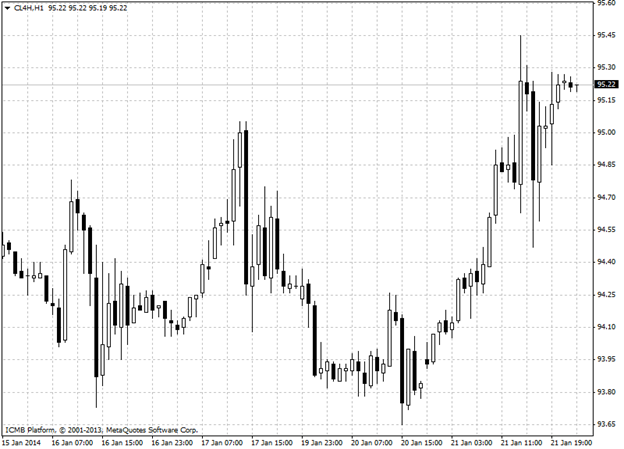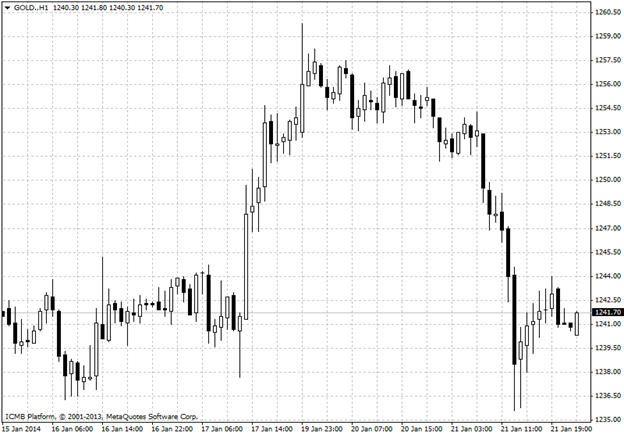CL
Oil prices rose on Tuesday after the International Energy Agency said earlier that global demand is on the rise, while an International Monetary Fund decision to hike its 2014 global growth forecasts also supported the commodity. Crude gains on IEA supply report, IMF growth forecasts On the New York Mercantile Exchange, West Texas Intermediate crude for delivery in March traded at USD95.03 a barrel during U.S. trading, up 0.47%. New York-traded oil futures hit a session low of USD93.93 a barrel and a high of USD95.46 a barrel. The March contract settled up 0.52% at USD94.59 a barrel on Friday. There was no settlement on the NYMEX on Monday due to the Martin Luther King Jr. Day holiday. In its monthly report released earlier in the session, the IEA said that global oil demand is forecast to rise by 1.3 million barrels a day this year to 92.5 million barrels, compared to a previous estimate of 91.2 million barrels a day. The IEA cited “stronger economic momentum as the year progresses,” as its reasoning behind the upward revision. The agency added that oil supplies from the Organization of the Petroleum Exporting Countries rose by 310,000 barrels a day to 29.82 million barrels in December, due to higher output in Saudi Arabia.

GOLD
Gold prices fell on Tuesday after the International Monetary Fund hiked its global growth forecast for this year and solidified expectations for central banks to unwind stimulus programs that have bolstered gold prices since the 2008 financial crisis. In revisions to its World Economic Outlook report published on Tuesday the IMF said it expects the global economy to grow by 3.7% in 2014, up from an October forecast of 3.6% growth. The news fueled expectations for central banks to wind down stimulus programs such as bond purchases going forward, the Federal Reserve especially, as the multilateral lending institution predicted the U.S. economy to expand 2.8%, up from an October forecast of 2.6%. Many market participants expect the Fed to trim its quantitative easing program to USD65 billion from the current USD75 billion at its next policy meeting on Jan. 29. Fed bond purchases aim to prop up the economy by suppressing long-term interest rates, thus weakening the dollar as a side effect as investors flock to asset classes like stocks, which makes gold an attractive inflation hedge. Since the 2008 financial crisis, the Federal Reserve has rolled out three rounds of quantitative easing to prop up the economy. The current program began in September of 2012 and saw the Fed initially buy USD85 billion in Treasury holdings and mortgage debt a month from financial institutions.

